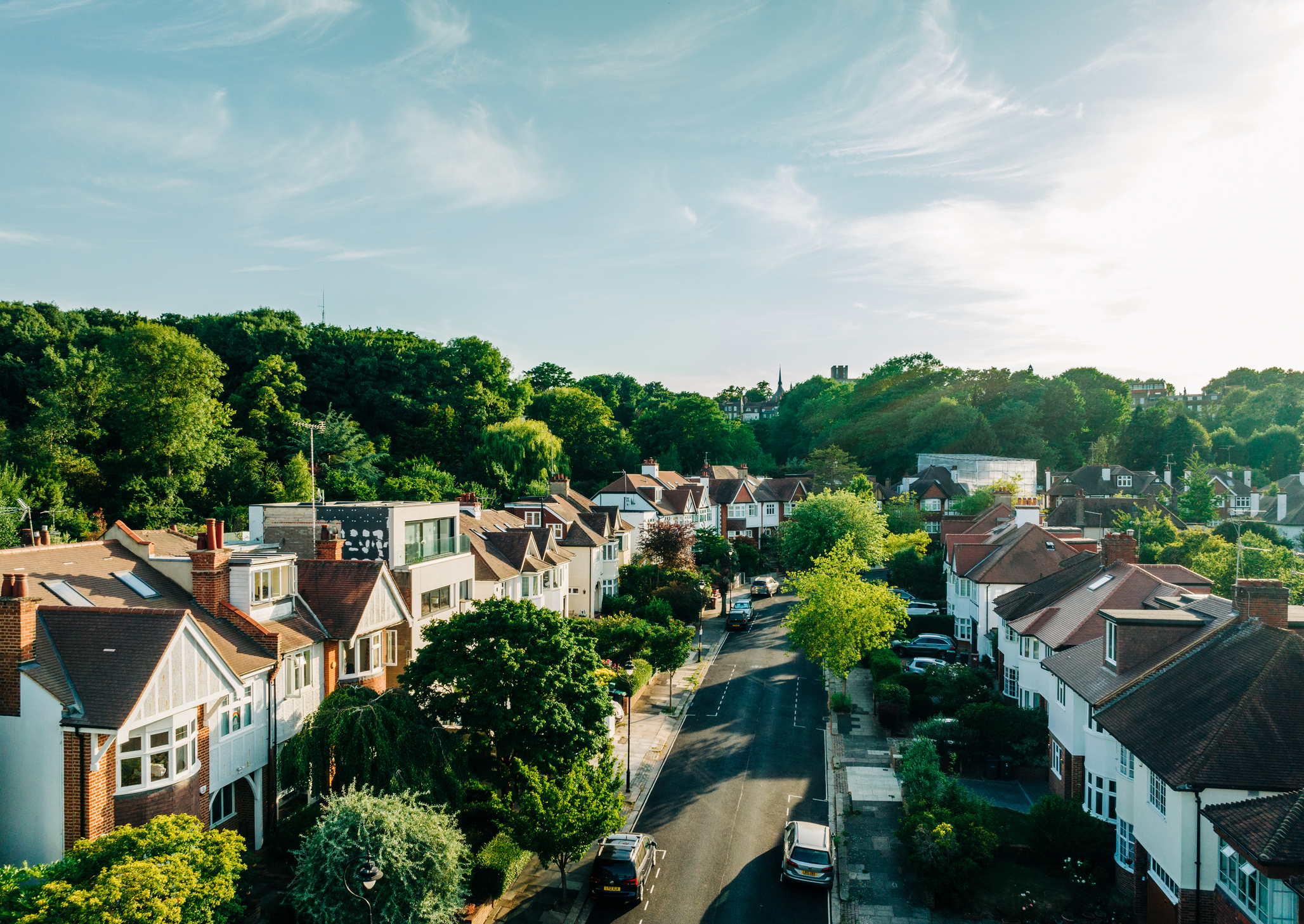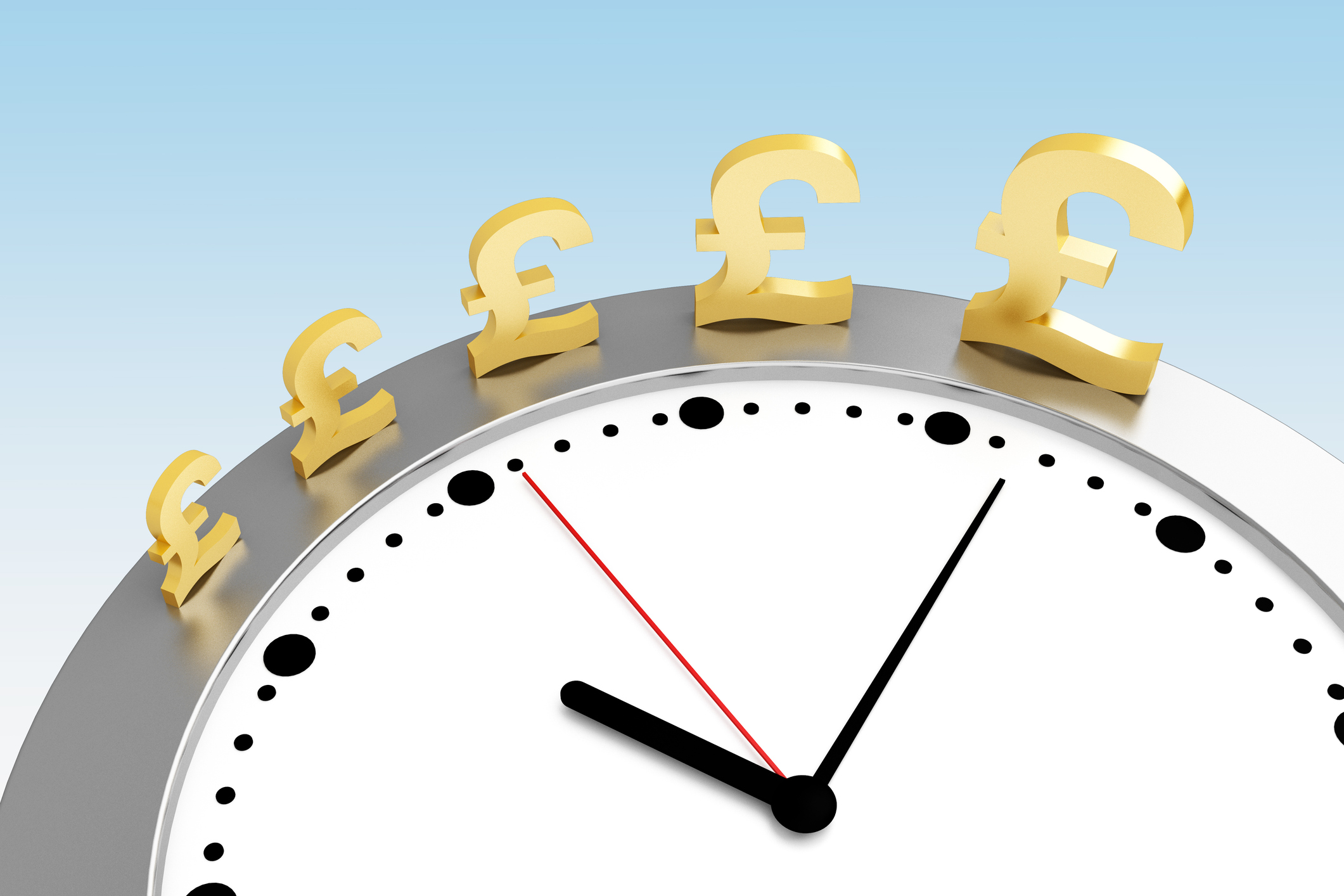Revealed: the luckiest Premium Bond areas in the UK – do you live in one?
NS&I has made 532 millionaires over 30 years. What UK area has been the luckiest for Premium Bond holders, and do Premium Bonds remain worthy of your cash?


National Savings and Investments’ (NS&I’s) much-loved Premium Bonds have made 532 millionaires since it drew its first £1 million jackpot winner in April 1994. Do you live in a lucky area?
With recent changes to the fund rate, the odds of winning and the number of monthly jackpot winners, it begs the question: are Premium Bonds still worth the investment?
Premium Bonds are a government-backed savings product where you participate in a monthly prize draw, and can now bag between £25 and £1 million tax-free. But NS&I hasn’t always made millionaires.
MoneyWeek
Subscribe to MoneyWeek today and get your first six magazine issues absolutely FREE

Sign up to Money Morning
Don't miss the latest investment and personal finances news, market analysis, plus money-saving tips with our free twice-daily newsletter
Don't miss the latest investment and personal finances news, market analysis, plus money-saving tips with our free twice-daily newsletter
The provider ran its first Premium Bonds prize draw back in 1957 when the size of the jackpot was £1,000. 37 years later, in April 1994, the prize pot increased to £1 million. So it’s fair to say they’ve aged well, with more than £30 billion awarded to Premium Bond winners.
The 532 Premium Bond millionaires all received a visit from Agent Million, who delivers the life-changing news. According to NS&I, their Agents Million has travelled around 222,000 miles over 30 years, with its youngest winner aged just three, and its oldest being 98.
Find out how many Premium Bond holders have been lucky in your area and whether the savings product is still worth it.
How many Premium Bond winners are there where you live?
Since the first draw in June 1957, ERNIE (Electronic Random Number Indicator Equipment) has drawn more than 684 million prizes worth £30.5 billion.
Here’s a breakdown of where all of the millionaire winners over the past 30 years lived when they won. Do you live in a lucky city?
| Areas in the UK | Number of Premium Bond millionaires |
|---|---|
| Avon | 1 |
| Barnet | 3 |
| Bexley | 1 |
| Brent | 2 |
| Bromley | 2 |
| Bedfordshire | 4 |
| Berkshire | 4 |
| Birmingham | 5 |
| Brighton & Hove | 1 |
| Bristol | 13 |
| Buckinghamshire | 6 |
| Cambridgeshire | 4 |
| Camden | 4 |
| Cheshire | 9 |
| City of Westminister | 1 |
| Cleveland | 2 |
| Cornwall | 4 |
| Coventry | 1 |
| Croydon | 3 |
| Cumbria | 8 |
| Derbyshire | 4 |
| Devon | 17 |
| Dorset | 12 |
| Durham | 5 |
| Ealing | 1 |
| Sussex (East & West) | 20 |
| Essex | 23 |
| Gloucestershire | 10 |
| Manchester | 8 |
| Hampshire & Isle of Wight | 13 |
| Harrow | 1 |
| Hereford and Worcester | 4 |
| Hertfordshire | 15 |
| Highlands | 2 |
| Hammersmith and Fulham | 1 |
| Haringey | 1 |
| Havering | 1 |
| Hillingdon | 2 |
| Hounslow | 1 |
| Islington | 1 |
| Inner London | 7 |
| Kendal | 1 |
| Kent | 23 |
| Kirklees | 2 |
| Kingston Upon Thames | 1 |
| Lancashire | 14 |
| Lambeth | 2 |
| Lewisham | 1 |
| Merton | 1 |
| Newham | 1 |
| Redbridge | 1 |
| Richmond | 4 |
| Tower Hamlets | 1 |
| Waltham Forest | 1 |
| Leeds | 4 |
| Leicester | 9 |
| Lincolnshire | 5 |
| Liverpool | 2 |
| London | 5 |
| Merseyside | 2 |
| Norfolk | 2 |
| North Humberside | 1 |
| North Yorkshire | 3 |
| Northants | 2 |
| Norwich | 4 |
| Northumberland | 1 |
| Nottingham | 14 |
| Outer London | 11 |
| Oxfordshire | 2 |
| Preston | 1 |
| Reading | 1 |
| Sefton | 3 |
| Sheffield | 3 |
| Shropshire | 3 |
| Somerset | 8 |
| South Yorkshire | 2 |
| Southampton | 2 |
| Staffordshire | 5 |
| Stockport | 1 |
| Stoke On Trent | 2 |
| Surrey | 29 |
| Tyne & Wear | 10 |
| Wandsworth | 3 |
| Warwickshire | 8 |
| West Midlands | 5 |
| West Yorkshire | 6 |
| Wirral | 2 |
| Wolverhampton | 1 |
| York | 1 |
| Yorkshire | 4 |
| Scotland | 6 |
| Wales | 19 |
| Northern Ireland | 6 |
Surrey takes the number one spot, with 29 Premium Bond holders winning the £1 million jackpot in the county. The latest Premium Bond draw in June made another bondholder in Surrey a millionaire.
Essex and Kent come joint second, with 23 millionaires in each area.
How have Premium Bonds changed over 30 years?
While Premium Bonds have already had a lifespan of 67 years (and counting), they only just reached their peak last September when the prize fund rate hit an all-time high, and the odds of winning became the highest yet.
But how did Premium Bonds evolve before they hit their peak?
Number of millionaires
When NS&I introduced Premium Bonds to the world, believe it or not, the jackpot was only worth £1,000. It was in April 1994 that the provider upped its prize pot to £1 milllion – but even then, there was only one Premium Bond millionaire each month.
In August 2005, NS&I decided to make two millionaires each month. This lasted for four years until it was dropped back down to one millionaire winner a month in April 2009.
Then, from August 2014, the number went back up to two millionaires a month, and it has stayed put ever since.
So, currently, NS&I makes two Premium Bond holders millionaires each month. Other prizes on offer start from £25 and go up to £100,000.
Prize fund rate
Premium Bonds have a prize fund rate that NS&I uses as a benchmark to determine how many prizes of each value should be given away each month. For example, if the fund rate increases, so does the amount awarded that month, and if the fund rate lowers, the value of prizes follow suit.
The prize fund rate is an interest rate (currently 4.4%), but it's important to note that any money you invest in Premium Bonds does not earn interest.
The current 4.4% fund rate came into effect in March and the total value of prizes dished out in the June Premium Bond prize draw was £455 million.
Before this, the prize fund rate hit its peak in September, when it rose from 4% to 4.65% – the highest it's ever been. The lift in rate came as interest rates hit an all-time high, at 5.25% in August, and the best savings accounts also became a lot more attractive, with rates shooting above 6%.
The new prize fund rate meant a record value in prizes was awarded in September of just over £470 million. The 4.65% rate was frozen until March, when it dropped to 4.4%. But, until then, Premium Bond holders raked in the biggest prize pot NS&I had ever seen.
To put things into perspective, 10 years ago in April 2014, the prize fund rate stood at just 1.3%. Five years on, the rate hadn’t seen much movement, with it only increasing to 1.4% in April 2019. In 2020, the year the pandemic started in the UK, the fund rate dipped by 1% – to its lowest level since April 2009.
It was only in June 2022 when the fund rate finally went up after two years to 2.2%, and slowly reached its peak in September 2023.
Odds of winning
The odds of winning right now is the best it's been in more than 15 years, having improved in September from 22,000 to 1 for every £1 Bond to 21,000 to 1.
If we look back 10 years ago, the chances of winning on Premium Bonds was 26,000 to 1, and in December 2008, it was a whopping 36,000 to 1. This stayed put until October 2009, when the odds improved to 24,000 to 1.
Even though we saw the prize fund rate fall in March, the odds of winning remained the same, at 21,000 to 1.
Are Premium Bonds still worth it?
With the introduction of the £1 million prize pot, an increase in the number of millionaires after 37 years and a record-high prize fund rate, it sounds like investing in Premium Bonds is a no-brainer.
But, at a time when the base rate is still flying high at 5.25% and the wider savings market is offering inflation-busting rates, Premium Bonds look less attractive. Sarah Coles, head of personal finance at Hargreaves Lansdown, says: “In an average year, the average saver with £1,000 of bonds will win absolutely nothing.”
Remember, no return is guaranteed when you put money in Premium Bonds, and while your money is sitting there, it’s not earning any interest either, which means your cash is losing value.
Currently, you can earn up to 5.2% on an easy-access saver and 5.22% on a one-year fix. If you’re on the hunt for tax-free savings, then an ISA will be a better option as your return on £20,000 will be protected from the taxman. The best cash ISA is returning 5.17% by Plum.
If you’re looking for something similar to Premium Bonds, there are alternatives that offer savings and a prize pot. NatWest, Halifax and Chip are among some of the providers who offer prize incentives.
Or, if you’re still keen to invest with NS&I, you can always opt for its other savings products. In April it launched its three-year fixed British Savings Bond, offering 4.15% AER. At the end of May, NS&I launched one-year fixed savers under its British Bonds, returning 4.5% AER. The provider also increased the rate on its Direct Saver from 3.65% to 4%.
That said, Premium Bonds are down to luck – if you enjoy that ‘luck’ element, there’s nothing to say you can’t give it a go. Plus, you can’t dismiss that it’s the most popular savings product in the UK, with more than 24 million people saving in Premium Bonds.
“You can’t underestimate the attraction of the chance to win big,” says Coles.
Get the latest financial news, insights and expert analysis from our award-winning MoneyWeek team, to help you understand what really matters when it comes to your finances.
Vaishali has a background in personal finance and a passion for helping people manage their finances. As a former staff writer for MoneyWeek, Vaishali covered the latest news, trends and insights on property, savings and ISAs.
She also has bylines for the U.S. personal finance site Kiplinger.com and Ideal Home, GoodTo, inews, The Week and the Leicester Mercury.
-
 ‘Why I have ditched my Help to Buy ISA for cash savings and the stock market’
‘Why I have ditched my Help to Buy ISA for cash savings and the stock market’Without the 25% bonus, my Help to Buy ISA is effectively redundant, says MoneyWeek writer Sam Walker.
-
 Is your inheritance tax allowance cut if you sell to downsize or sell your home to pay for care?
Is your inheritance tax allowance cut if you sell to downsize or sell your home to pay for care?Downsizing relief is a little-known benefit that could save your loved ones tens of thousands of pounds in inheritance tax after you’ve died.
-
 Premium Bonds winners announced – did you scoop the September jackpot?
Premium Bonds winners announced – did you scoop the September jackpot?NS&I has announced the winners for September’s Premium Bonds prize draw, with two lucky savers becoming overnight millionaires. Did you win this month?
-
 How long does it take to win a Premium Bonds prize?
How long does it take to win a Premium Bonds prize?It could take much longer than you think to win something in the Premium Bonds prize draw
-
 Premium Bond winners – who won the November £1 million jackpot?
Premium Bond winners – who won the November £1 million jackpot?NS&I unveils November’s Premium Bond winners. Who bagged the jackpot and what other prizes are on offer?
-
 NS&I to cut Premium Bond prize rate to 4.15%
NS&I to cut Premium Bond prize rate to 4.15%The odds of winning a prize will fall to 22,000 to 1 for the December draw, while NS&I is also slashing the rates on other savings products. We have all the details
-
 Premium Bond winners – who drew the October £1 million jackpot?
Premium Bond winners – who drew the October £1 million jackpot?NS&I unveils October’s Premium Bond Winners. Who bagged the £1million jackpot and what other prizes are on offer?
-
 NS&I overshoots financing target - could we see more Premium Bond rate cuts?
NS&I overshoots financing target - could we see more Premium Bond rate cuts?Are NS&I Premium Bond prize fund rate cuts on the horizon? An attractive one-year savings bond plus ever-popular Premium Bonds meant NS&I raised too much money for the government last year
-
 April 2024 NS&I Premium Bond winners – check now to see whether you've won
April 2024 NS&I Premium Bond winners – check now to see whether you've wonPremium Bond holders can check from today (3 April) to see if they have won a prize in NS&I’s April 2024 Premium Bond draw
-
 April 2024 Premium Bond winners – did you bag the £1m jackpot?
April 2024 Premium Bond winners – did you bag the £1m jackpot?NS&I has unveiled two lucky millionaires in the April draw. Have you won any Premium Bonds and how can you check for prizes?
